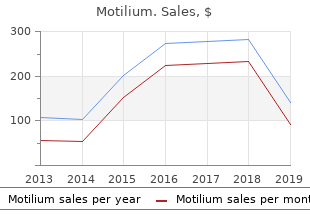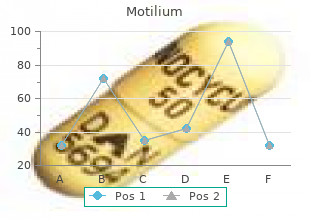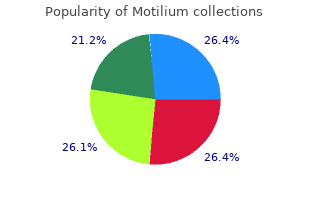"Buy motilium 10mg mastercard, gastritis dietitian."
By: James J. Nawarskas, PharmD, BCPS
- Associate Professor, Department of Pharmacy Practice and Administrative Sciences, College of Pharmacy, University of New Mexico, University of New Mexico, Albuquerque, New Mexico
The model draws heavily on the cognitive theory of evaluative anxieties described in Beck et al gastritis diet ��� buy motilium mastercard. The following account recognizes three phases to gastritis symptoms and home remedies discount motilium 10mg overnight delivery social anxiety; the anticipatory phase gastritis diet food list purchase motilium toronto, actual exposure to the social situation, and postevent processing. The Anticipatory Phase In most instances there is some forewarning of an impending social encounter that for individuals with social phobia can elicit almost as much anxiety as exposure to the actual social interaction. This anticipatory phase could be triggered by a variety of informational or contextual cues such as being told of a future social task, reviewing the entries in one�s work diary, or being in a location that reminds a person of a future social event. The length of the anticipatory phase could vary from a few minutes to many days or even weeks. We would expect anxiety to intensify as the feared social event becomes more imminent, which is consistent with Riskind�s (1997) concept of looming maladaptive style. Moreover, the more intense the anticipatory anxiety, the more likely it is that avoidance will be the preferred outcome. Pervasive avoidance of social interaction is the hallmark of social phobia because it is considered the most effective way to eliminate anticipatory anxiety. Consequently, individuals feel a strong urge to avoid when anticipating a future social event even though they recognize its detrimental effects. In our case illustration Gerald frequently experienced intense anticipatory anxiety whenever he even suspected the possibility of a social encounter. He would immediately begin strategizing how he could avoid the social situation and maintain his isolation from others. However, avoidance is not always possible and so the anxiety experienced during this phase will mean that the socially phobic individual enters the social situation in a state of heightened anxiety. The cognitive basis of anticipatory social anxiety will primarily involve effortful, elaborative processes as the individual intentionally thinks about the approaching social event. Preexisting maladaptive social self-schemas will be activated that involve beliefs of perceived social inadequacy, the distressing nature of anxiety, the imagined negative judgments of others, and the inability to meet expected social performance standards.

Culture-Related Diagnostic Issues Tic disorders do not appear to gastritis symptoms headache order motilium mastercard vary in clinical characteristics gastritis diet ���������� purchase discount motilium on line, course chronic gastritis juice 10mg motilium with mastercard, or etiology by race, ethnicity, and culture. However, race, ethnicity, and culture may impact how tic disorders are perceived and managed in the family and community, as well as influencing patterns of help seeking, and choices of treatment. G ender-Related Diagnostic Issues Males are more commonly affected than females, but there are no gender differences in the kinds of tics, age at onset, or course. Women with persistent tic disorders may be more likely to experience anxiety and depression. Functional Consequences of Tic Disorders Many individuals with mild to moderate tic severity experience no distress or impairment in functioning and may even be unaware of their tics. Individuals with more severe symp� toms generally have more impairment in daily living, but even individuals with moderate or even severe tic disorders may function well. Less commonly, tics dis� rupt functioning in daily activities and result in social isolation, interpersonal conflict, peer victimization, inability to work or to go to school, and lower quality of life. D ifferential Diagnosis Abnormal movements that may accompany other medical conditions and stereotypic movement disorder. Motor stereotypies are defined as involuntary rhythmic, repetitive, predictable movements that appear purposeful but serve no obvious adaptive function or purpose and stop with distraction. Examples include repetitive hand waving/rotating, arm flapping, and finger wiggling. Chorea represents rapid, random, continual, abrupt, irregular, unpredictable, nonstereotyped actions that are usually bilateral and affect all parts of the body. The timing, direction, and distribution of movements vary from mo� ment to moment, and movements usually worsen during attempted voluntary action. Dys� tonia is the simultaneous sustained contracture of both agonist and antagonist muscles, resulting in a distorted posture or movement of parts of the body.
Order motilium uk. Baba ramdev Yoga for stomach.

Diagnostic Features the essential features of substance/medication-induced psychotic disorder are prominent delusions and/or hallucinations (Criterion A) that are judged to gastritis symptoms and diet cheap motilium 10mg with mastercard be due to gastritis and gerd generic motilium 10mg mastercard the physiolog� ical effects of a substance/medication gastritis dietitian discount motilium 10mg with visa. Hallucinations that the individual realizes are substance/medicationinduced are not included here and instead would be diagnosed as substance intoxication or substance withdrawal with the accompanying specifier "with perceptual disturbances" (applies to alcohpl withdrawal; cannabis intoxication; sedative, hypnotic, or anxiolytic withdrawal; and stimulant intoxication). A substance/medication-induced psychotic disorder is distinguished from a primary psychotic disorder by considering the onset, course, and other factors. For drugs of abuse, there must be evidence from the history, physical examination, or laboratory findings of substance use, intoxication, or withdrawal. Substance/medication-induced psychotic disorders arise during or soon after exposure to a medication or after substance intoxica� tion or withdrawal but can persist for weeks, whereas primary psychotic disorders may precede the onset of substance/medication use or may occur during times of sustained ab� stinence. Once initiated, the psychotic symptoms may continue as long as the substance/ medication use continues. Another consideration is the presence of features that are atyp� ical of a primary psychotic disorder. For example, the appearance of delusions de novo in a person older than 35 years without a known history of a primary psychotic disorder should suggest the possibility of a substance/medicationinduced psychotic disorder. Even a prior history of a primary psychotic disorder does not rule out the possibility of a substance/medication-induced psychotic disorder. In contrast, factors that suggest that the psychotic symptoms are better accounted for by a primary psychotic disorder include persistence of psychotic symptoms for a substantial period of time. Other causes of psychotic symptoms must be considered even in an individual with substance intoxication or withdrawal, because substance use problems are not uncommon among individuals with non-substance/medication-induced psychotic disorders. In addition to the four symptom domain areas identified in the diagnostic criteria, the assessment of cognition, depression, and mania symptom domains is vital for making crit� ically important distinctions between the various schizophrenia spectrum and other psy� chotic disorders. Associated Features Supporting Diagnosis Psychotic disorders can occur in association with intoxication with the following classes of substances: alcohol; cannabis; hallucinogens, including phencyclidine and related sub� stances; inhalants; sedatives, hypnotics, and anxiolytics; stimulants (including cocaine); and other (or unknown) substances. Psychotic disorders can occur in association with with� drawal from the following classes of substances: alcohol; sedatives, hypnotics, and anxio� lytics; and other (or unknown) substances. Some of the medications reported to evoke psychotic symptoms include anesthetics and analgesics, anticholinergic agents, anticonvulsants, antihistamines, antihypertensive and cardiovascular medications, antimicrobial medications, antiparkinsonian medica� tions, chemotherapeutic agents.

Is the client able to chronic gastritis grading purchase motilium us recall these explanations when anxious and if so healing gastritis with diet motilium 10 mg visa, what effect does this have on the anxious statefl The weekly panic log can be a useful starting point for a discussion on possible alternative explanations for unpleasant or anxious physical sensations gastritis xantomatosa order motilium discount. Even if an individual is unable to generate an alternative explanation to the catastrophic misinterpretation, this will be valuable clinical information for treatment planning. In our case illustration, Helen�s initial apprehensive thoughts after noticing an unexpected physical sensation were �What�s wrong with mefl Occasionally she could attribute the symptoms to physical activity or a state of ill health. However, she had diffculty believing these alternative explanations or even being able to access them when she felt intense anxiety or panic. Also she became intolerant of anxiety, so interpreting the sensations as symptoms of anxiety provided no relief for her. It was clear from the assessment that strengthening her reappraisal capability would be an important focus of treatment. Perceived Panic Outcome A fnal component of the case conceptualization is to determine the �natural� outcome of panic attacks. It is expected that individuals will engage in escape, avoidance, and safetyseeking behaviors in an effort to control the anxiety and panic. To what extent is an individual able to achieve a sense of safety after the occurrence of an anxiety or panic episodefl How long Panic Disorder 313 does this sense of safety last before the patient is again concerned about the recurrence of panicfl What is the individual�s degree of self-effcacy in her ability to cope with panicfl Information on panic outcome can be obtained from the weekly panic log, the Symptom Reappraisal Form (Appendix 8. Helen was able to achieve a reasonably high level of safety after her episodes of acute anxiety and panic but these tended to be relatively short-lived. She engaged in extensive reassurance seeking from family members and searching for her symptoms on the Internet, as well as avoiding perceived triggers.

